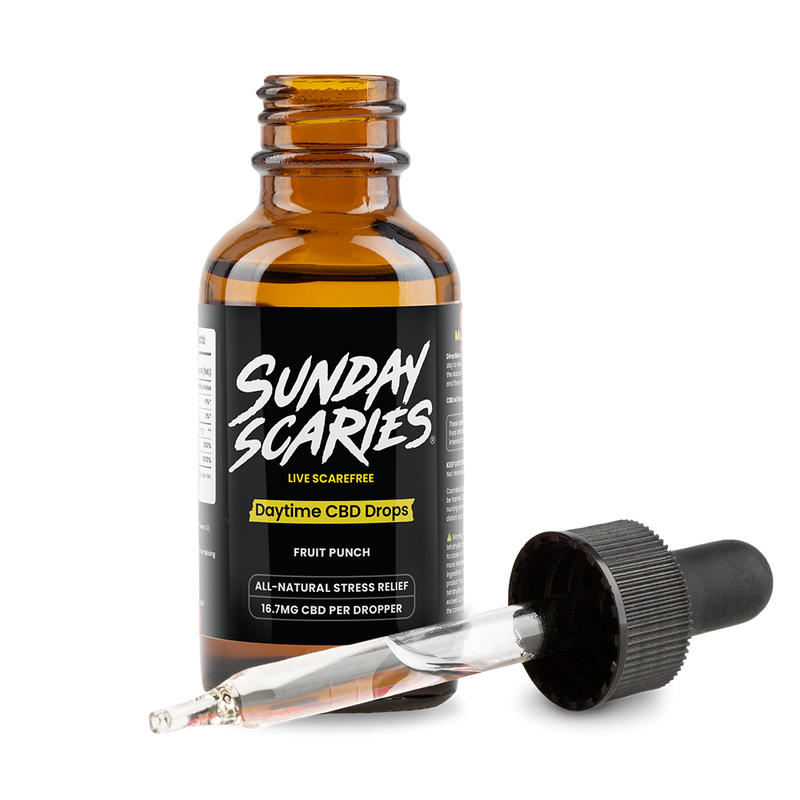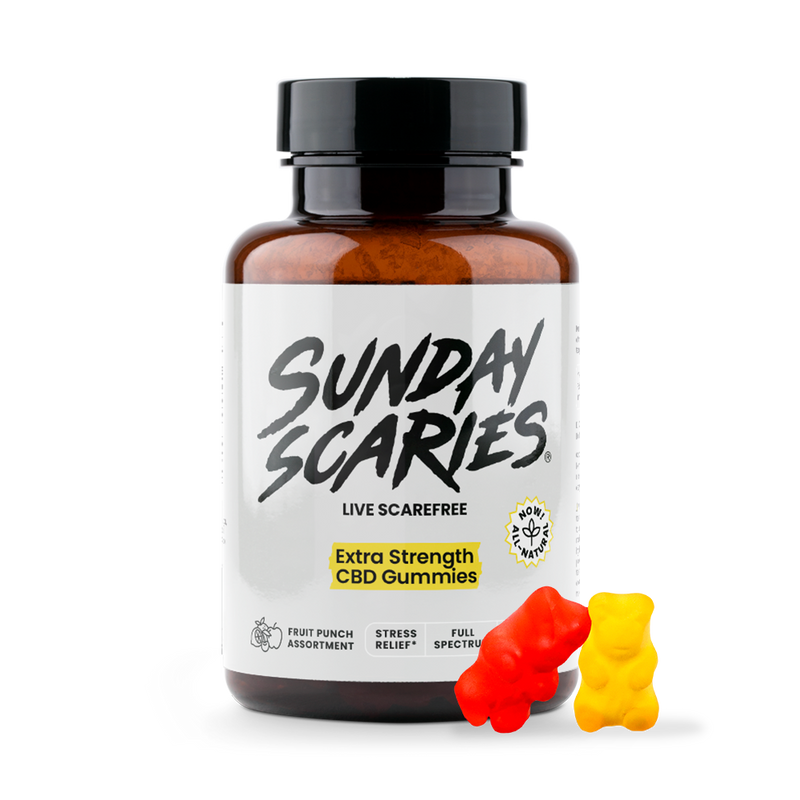
What is CBG? CBG Oil Benefits for Energy
CBG (Cannabigerol) is a non-psychoactive cannabinoid found in cannabis plants, being studied for its potential therapeutic benefits including anti-inflammatory, antibacterial, and neuroprotective properties. CBG is often called the "mother of all cannabinoids" and is gaining popularity for its unique health benefits.

This article defines CBG and explains how it works, its benefits, its differences from CBD and how it helps with energy.
Key Takeaways
- Cannabigerol (CBG) is a non-psychoactive cannabinoid found in cannabis plants, known as the ‘mother of all cannabinoids’ due to its role in forming other cannabinoids like THC and CBD.
- CBG interacts with the body’s endocannabinoid system and is being studied for its potential therapeutic benefits for conditions such as chronic pain, inflammatory bowel disease, neurodegenerative diseases, and glaucoma due to its purported anti-inflammatory, neuroprotective, and appetite-stimulating properties.
- CBG is generally regarded as safe, though it may have side effects like nausea and drowsiness; it is important to start with a low dose and consult with a healthcare provider, especially considering the ongoing research and potential drug interactions.
What is CBG?: The Comprehensive Definition
Cannabigerol (CBG) is a non-psychoactive cannabinoid. It is found in cannabis plants, particularly in the cannabis plant.
Unlike THC, which is known for its intoxicating effects, CBG does not produce a high, making it a favorable option for those seeking therapeutic benefits without the psychoactive impact.
Often referred to as the “mother of all cannabinoids,” CBG is instrumental in the formation of other cannabinoids like THC and CBD. This transformation occurs through a natural process called decarboxylation, where the acidic form of CBG, known as cannabigerolic acid (CBGA), converts into these other compounds.
In the realm of cannabis cannabinoid res, CBG plays a crucial role in understanding the plant’s therapeutic potential. As cannabis plants produce CBG, it serves as a foundation for the development of other cannabinoids.
CBG is considered one of the major cannabinoids, although it is typically present in lower concentrations compared to CBD and THC.
Certain strains of cannabis, such as the Jack Frost CBG, are bred to have higher levels of CBG, allowing for more focused extraction and use in various products.
As research continues to explore the potential benefits of CBG, its significance in the realm of cannabinoids continues to grow, especially when derived from young cannabis plants.
What is Cannabis Cannabinoid Res?
"Cannabis cannabinoid res" refers to the residual cannabinoids present in cannabis plants or products after primary extraction processes. These residual cannabinoids, which may include THC, CBD, CBG, and others, can still have therapeutic or psychoactive effects and are often further processed to extract these remaining compounds.
What is CBG Oil? & How It Helps with Energy
CBG oil is a concentrated hemp extract that contains cannabigerol (CBG) suspended in a carrier oil like MCT or hemp seed oil. While CBG is the cannabinoid itself, CBG oil is the final product designed for easy dosing—typically used sublingually (under the tongue) or added to food and beverages.
CBG oil is often chosen for its potential to support mental clarity, energy, and focus without the sedating effects of other cannabinoids like CBD or THC. Many users report that taking CBG oil in the morning gives them a clean, calm sense of alertness—similar to the focus you'd want from caffeine, but without the crash or jitters. This makes CBG oil an appealing option for people seeking natural support for productivity, motivation, or attention during the day.
In addition to its uplifting effects, CBG oil may also support inflammation regulation, digestive health, and mood balance. Since it’s non-intoxicating and well-tolerated, it’s becoming increasingly popular as a daily wellness supplement.
When choosing a CBG oil, look for full-spectrum or broad-spectrum formulas for enhanced benefits through the entourage effect, and make sure the product is third-party tested for purity and potency.
How Does CBG Work?
CBG interacts with the body’s endocannabinoid system by binding to CB1 and CB2 receptors, similar to how other cannabinoids like CBD and THC function.
However, CBG has a unique affinity for these receptors, particularly CB1 receptors, which play a significant role in regulating various physiological processes, including pain sensation, mood, and appetite.
When CBG binds to these receptors, it boosts the effectiveness of anandamide, a neurotransmitter responsible for enhancing pleasure, motivation, and overall well-being.
Beyond its interaction with cannabinoid receptors, CBG also influences other systems within the body. It interacts with the opioid, dopaminergic, and serotonergic systems, which are all involved in pain processing and mood regulation.
This multifaceted interaction suggests that CBG may have broad therapeutic potential, especially in managing pain and mood disorders.
Additionally, CBG’s ability to mimic and support endocannabinoids helps maintain the body’s optimal state, contributing to overall health and well-being.
CBG’s versatility is further highlighted by its potential effects on energy levels and relief of swelling caused by injuries. By interacting with the endocannabinoid system, CBG can potentially alleviate specific health conditions by influencing various bodily functions and fostering a balanced state.
As research continues to uncover the mechanisms by which CBG works, its role in promoting health and wellness becomes increasingly evident.
Differences Between CBG and CBD
While both CBG and CBD are non-intoxicating cannabinoids, their molecular structures and interactions with the endocannabinoid system differ significantly. These structural differences lead to distinct therapeutic effects and interactions with cannabinoid receptors.
Here are some key differences between CBG and CBD:
- CBD is more commonly found in higher concentrations in most cannabis strains, making it a major cannabinoid, whereas CBG is considered a minor cannabinoid due to its typically lower presence.
- CBG is being studied and reported for having potential anti-inflammatory properties, while CBD is being studied and reported for its potential analgesic and anti-anxiety effects.
- CBG has been reported for treating glaucoma, while CBD has been studied for its potential in treating epilepsy and other neurological disorders. Although, more research needs to be conducted to confirm these perceived medical effects.
These differences highlight the unique properties and potential benefits of both CBD and CBG.
Furthermore, CBG and CBD interact differently with cannabinoid receptors, resulting in unique health benefits.
While CBD primarily interacts with the CB2 receptors, which are associated with immune responses, CBG has a more pronounced effect on CB1 receptors, influencing mood and pain perception.
This distinction underscores why CBG may present unique therapeutic advantages over CBD, thus adding value to the range of cannabinoids used for medical and wellness purposes.
- For a more comprehensive breakdown, check out our article: CBD vs. CBG.
Potential Benefits of CBG
The potential benefits of the mother cannabinoid, CBG, are vast and varied. CBG may deliver anti-inflammatory properties, neuroprotective effects, and appetite stimulation. Although, as with the other cannabinoids found in the cannabis plant, more research needs to be performed in order to establish claims.
Let's examine these specific benefits and explore how CBG potentially contributes to better health and wellness.
Anti-inflammatory Properties
CBG is being studied for its anti-inflammatory properties, which may make it a powerful ally in supporting immune health and managing chronic inflammation.
The theory is that CBG can reduce swelling and block pain signals in the nervous system.
Additionally, CBG’s potential ability to increase appetite and reduce body aches makes it ripe for an experimental study on treating inflammatory bowel disease.
By supporting the body’s immune response and decreasing swelling, CBG may be a shining star in medical cannabis, promoting better health and quality of life for those affected by these ailments.
Neuroprotective Effects
Studies are currently underway to determine whether CBG’s neuroprotective effects could potentially benefit the treatment of neurodegenerative diseases like Huntington’s and Parkinson’s disease.
These neuroprotective properties may help slow the progression of neurodegenerative conditions and improve cognitive functions.
Research is ongoing to reveal whether CBG demonstrates the ability to reduce nerve cell damage and brain inflammation in the central nervous system, highlighting its potential as a therapeutic agent for neurological disorders.
While more research is needed to fully understand its effects on human neurological health, consumers are currently using CBG and other cannabinoids from the cannabis plant to help improve cognitive function.
Appetite Stimulation
Another significant benefit of CBG is its ability to stimulate appetite.
Anecdotal evidence suggests that CBG can lead to a healthy appetite, making it a useful tool for those with eating disorders or undergoing treatments that affect their ability to maintain a regular eating pattern.
As a well-tolerated appetite stimulant, CBG offers a natural alternative to pharmaceutical appetite stimulants, potentially reducing the risk of adverse effects.
This makes CBG a potential valuable option for improving nutritional intake and overall health in individuals struggling with appetite-related issues.
Safety and Side Effects of CBG
CBG is generally regarded as safe, provided that the product being consumed is accurately labeled and contains what it advertises.
However, like any supplement, CBG can have side effects, which may include nausea, dizziness, and dry mouth. Being mindful of these potential side effects and observing your body’s response to CBG is important.
In some cases, high doses of CBG can cause the following side effects, which may be mistaken for withdrawal symptoms:
-
Changes in appetite, either increasing or decreasing hunger
-
Digestive system upset, such as stomach aches, nausea, and diarrhea
-
Drowsiness
-
Headaches
Starting with a low dose and gradually increasing it while monitoring for any adverse effects is advisable.
Research on CBG is still ongoing, and not enough studies have been completed to determine its long-term effects or potential drug interactions.
Therefore, individuals with underlying health conditions or those taking other medications should consult a healthcare provider before incorporating CBG into their regimen.
Ensuring that the product is third-party tested and complies with legal standards can also help mitigate risks and ensure safety.
Legal Status of CBG
The legal status of CBG is governed by the 2018 Farm Bill, which legalized the production and sale of hemp and its derivatives, including CBG, at the federal level.
To be considered legal, hemp-derived CBG products must contain no more than 0.3% THC, ensuring they do not have psychoactive effects. This federal legality has opened the door for CBG products to be sold and used across the United States.
However, it is important to note that some states may have their own regulations regarding CBG.
Despite CBG’s federal legality, state-specific laws can vary, thus consumers should acquaint themselves with the regulations in their area. Staying informed about both federal and state laws can help ensure compliance and avoid potential legal issues.
How to Use CBG
Using CBG oil is straightforward and can be easily incorporated into your daily routine.
The most effective way to take CBG oil is to place a few drops under the tongue and hold it there for a while before swallowing.
This sublingual method allows for quick absorption into the bloodstream, maximizing the benefits of CBG. Depending on your needs, CBG oil can be taken in large doses at once or micro-dosed throughout the day.
Many CBD oil tinctures and CBD sleep oils are made using full-spectrum CBD, which is a hemp extract that contains all naturally occurring cannabinoids, terpenes, and other compounds found in the cannabis plant, providing an "entourage effect" for enhanced therapeutic benefits.
When selecting a CBG product, make sure it’s third-party tested for safety and accuracy. Checking the hemp source and confirming that the product complies with legal standards can help guarantee that you are getting a high-quality product.
By following these guidelines, you can safely and effectively incorporate CBG into your wellness routine.
What Products Contain CBG?
When answering "What is CBG?", it's also important to notate which products contain it. There are some CBG-specific products, but not many.
That being said, all full-spectrum CBD blends contain some amount of CBG along with other minor cannabinoids, and some full-spectrum products are even spiked or enhanced with a pure form of CBG.
All of our products at Sunday Scaries contain CBG, since they are all full spectrum, except for our CBD dog treats which are made using CBD isolate.
List of Products with CBG:
For a full list of full-spectrum products containing CBG, check out our collection page: CBD Edibles.
Summary
In summary, CBG is a remarkable cannabinoid with a wide range of potential benefits, from anti-inflammatory properties and neuroprotective effects to appetite stimulation.
As research continues to unveil its therapeutic potential, CBG stands out as a promising option for those seeking natural health solutions.
By understanding how CBG works, its safety profile, and legal status, consumers can make informed decisions and explore the benefits of this versatile cannabinoid.
Frequently Asked Questions
What is CBG?
CBG, or cannabigerol, is a non-psychoactive cannabinoid derived from the cannabis plant and is referred to as the "mother of all cannabinoids" due to its role in producing other cannabinoids like THC and CBD.
How does CBG work in the body?
CBG works in the body by interacting with the endocannabinoid system, binding to CB1 and CB2 receptors, and influencing systems involved in pain processing and mood regulation. This helps strengthen the function of anandamide.
What are the differences between CBD and CBG?
The main differences between CBD and CBG are their molecular structures and how they interact with cannabinoid receptors, resulting in different therapeutic effects.
What are the potential benefits of CBG?
CBG has potential benefits such as anti-inflammatory properties, neuroprotective effects, and appetite stimulation. These properties are being studied on whether they are helpful for conditions like chronic pain, neurodegenerative diseases, and appetite disorders.
Is CBG legal?
Yes, CBG is legal at the federal level as long as it is derived from hemp with no more than 0.3% THC, but state laws may differ.
Is there CBG in THC Edibles?
Yes, THC edibles, including THC Gummies, Delta-9 Gummies, and THC Sleep Gummies can contain CBG if they are made with full-spectrum extracts. Full-spectrum extracts include all the naturally occurring cannabinoids from the cannabis plant, so CBG, along with other cannabinoids, can be present in these products.

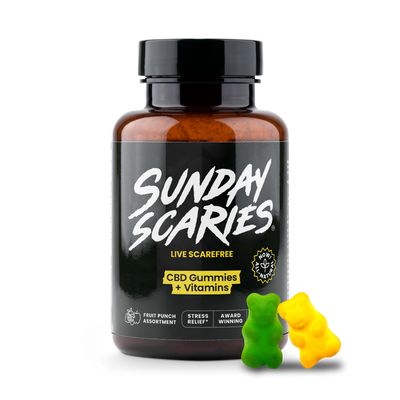 CBD Gummies
Stress Relief
CBD Gummies
Stress Relief
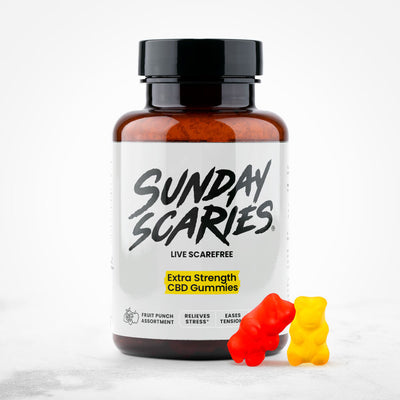 Extra Strength CBD Gummies
Stress Relief
Extra Strength CBD Gummies
Stress Relief
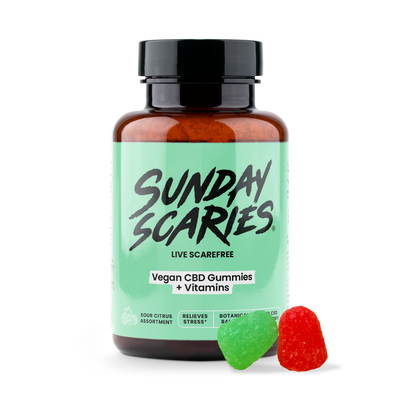 Vegan CBD Gummies
Stress Relief
Vegan CBD Gummies
Stress Relief
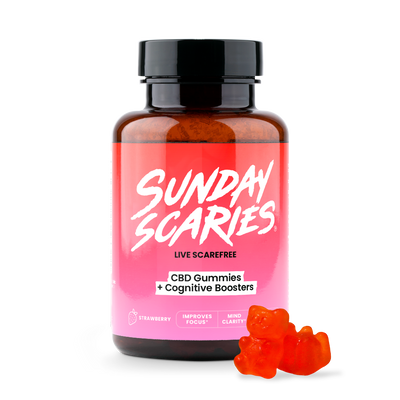 CBD Gummies for Focus
Focus Boost
CBD Gummies for Focus
Focus Boost
 CBD Candy
Mood Lift
CBD Candy
Mood Lift
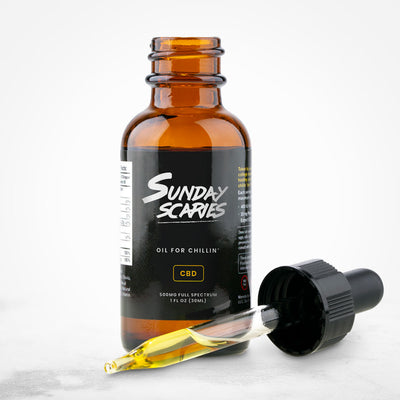 CBD Daytime Oil
Stress Relief
CBD Daytime Oil
Stress Relief
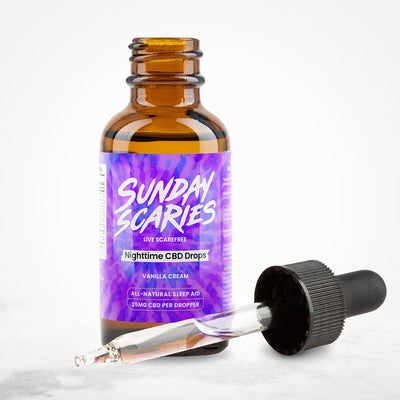 CBD Sleep Oil
Sleep Aid
CBD Sleep Oil
Sleep Aid
 CBD Dog Treats
Stress Relief
CBD Dog Treats
Stress Relief
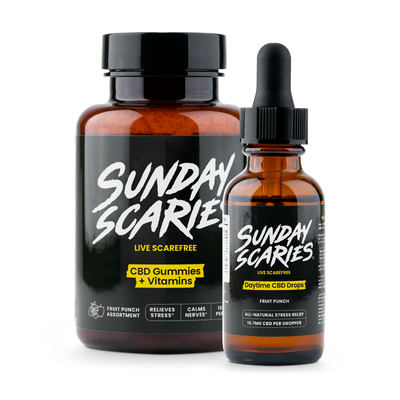 Side Piece Bundle
Stress Relief
Side Piece Bundle
Stress Relief
 Rando Bundle
Stress Relief
Rando Bundle
Stress Relief
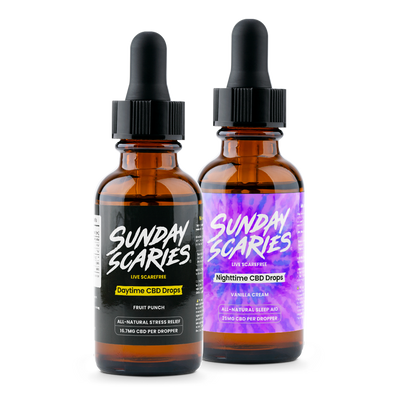 Sunrise & Sunset CBD Oil Bundle
Stress Relief
Sunrise & Sunset CBD Oil Bundle
Stress Relief
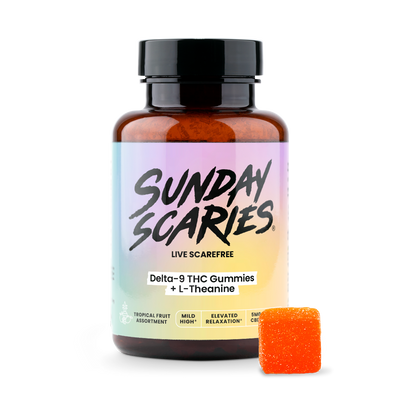 5mg Delta-9 Gummies
Euphoria
5mg Delta-9 Gummies
Euphoria
 10mg Delta-9 Gummies
Euphoria
10mg Delta-9 Gummies
Euphoria
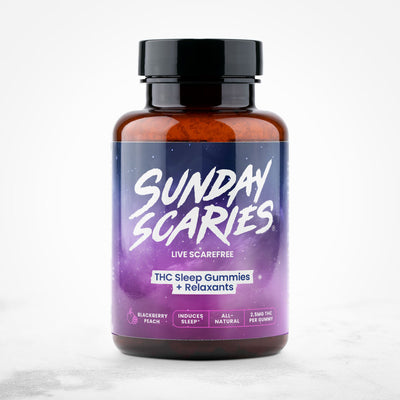 THC Gummies for Sleep
Sleep Aid
THC Gummies for Sleep
Sleep Aid
 Day & Night THC Gummies Bundle
Stress Relief
Day & Night THC Gummies Bundle
Stress Relief
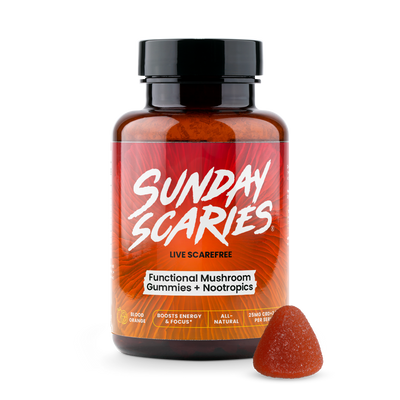 Mushroom Gummies
Focus Boost
Mushroom Gummies
Focus Boost
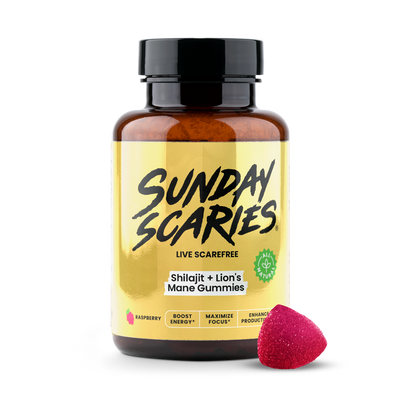 Shilajit Gummies
Focus Boost
Shilajit Gummies
Focus Boost
 Sunday Scaries Hat
Sunday Scaries Hat
 Sunday Scaries Dad Hat
Sunday Scaries Dad Hat
 Sunday Scaries T-Shirt
Sunday Scaries T-Shirt
 Sunday Scaries Pocket Tee
Sunday Scaries Pocket Tee
 Sunday Scaries Tank Top
Sunday Scaries Tank Top
 Sunday Scaries Sweatshirt
Sunday Scaries Sweatshirt
 Sunday Scaries Blanket Jacket
Sunday Scaries Blanket Jacket
 Sunday Scaries Sweatpants
Sunday Scaries Sweatpants

